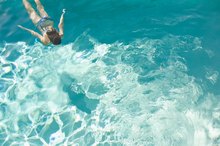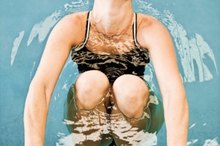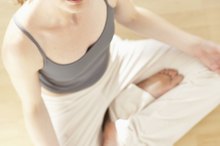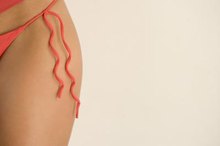What does fact checked mean?
At Healthfully, we strive to deliver objective content that is accurate and up-to-date. Our team periodically reviews articles in order to ensure content quality. The sources cited below consist of evidence from peer-reviewed journals, prominent medical organizations, academic associations, and government data.
- "National Institutes of Health"; State-of-the-Science Statement on Prevention of Fecal and Urinary Continence in Adults; NIH Office of the Director; Dec 10-12, 2007.
- National Institutes of Health: Urinary Incontinence
The information contained on this site is for informational purposes only, and should not be used as a substitute for the advice of a professional health care provider. Please check with the appropriate physician regarding health questions and concerns. Although we strive to deliver accurate and up-to-date information, no guarantee to that effect is made.
Adult Incontinence & Swimming
Cornell University estimates that 25 million Americans cope with urinary incontinence, and according to the International Foundation for Functional Gastrointestinal Disorders, about 25 percent of men and women over 40 experience fecal incontinence 13. Yet, despite its prevalence, embarrassment keeps some people from enjoying healthy activities such as swimming. There are products available that will allow you to go swimming without having to worry that anything will interfere with your exercise, enjoyment and privacy.
Urinary Incontinence
There are two common types of urinary incontinence affecting both women and men 3. The first is called stress incontinence, which occurs when a small amount of urine leaks as a result of sneezing, coughing, laughing or any exercise that puts pressure on the bladder. The second most common type is urge incontinence, which can be cause by an “overactive bladder.” The bladder muscles squeeze involuntarily and at inappropriate times, making you feel the frequent urge to urinate, even at night. Sometimes, those with overactive bladders will experience involuntary urine leakage because they simply cannot get to the bathroom before the bladder releases.
- There are two common types of urinary incontinence affecting both women and men 3.
- The first is called stress incontinence, which occurs when a small amount of urine leaks as a result of sneezing, coughing, laughing or any exercise that puts pressure on the bladder.
Bowel Incontinence
Swimming With a Catheter
Learn More
People with this disorder do not have regular control of their bowels, often resulting in leakage or involuntary excretion. Irritable bowel system can cause this disorder, as can an injury to the sphincter muscle. Many of the same neurological disorders that can cause urinary incontinence can cause fecal incontinence, such as multiple sclerosis, Alzheimer’s or dementia and stroke 3. However, products are also available that will protect those with bowel incontinence, allowing them to go swimming or engage in other physical activities without concern.
- People with this disorder do not have regular control of their bowels, often resulting in leakage or involuntary excretion.
Swim Products for Women
Some adult-sized swim diapers can be worn under a one-piece suit. You will have to shop around and experiment with the look and bulkiness of the swim diaper. Some retailers that specialize in continence products make a one-piece swimsuit with a no-show liner built in so that you can enjoy your time in the water.
Swim Products for Men
Swimming Pools Rules & Regulations
Learn More
For men, a pull-on swim pant or Velcro adjustable swim “diaper” might be the most convenient option, and they can be worn alone or under loose swim trunks. Easy Access Clothing, listed in the Resources section, carries a men’s pull-on swim short that does not look like a diaper. Modern waterproof underwear is designed not to crinkle noisily as the older plastic versions do, so you will be better able to maintain your privacy.
Resources and Retailers
Regular swim diapers can be found in many drugstores, but for specialty incontinence swimwear you will need to shop at specialty suppliers or medical supply stores. A company in England called Incy Wincy (See Resources) has a good selection of products for men and women, which can be shipped to customers in the U.S. The Resources section also contains a link for MedCatalog, which lists several online sources; you can always ask your doctor to recommend a product or retailer. Above all, you should not let incontinence keep you from living an active, healthy and enjoyable lifestyle.
- Regular swim diapers can be found in many drugstores, but for specialty incontinence swimwear you will need to shop at specialty suppliers or medical supply stores.
Caution
Standard incontinence diapers and pads should not be used for swimming, as they will become bloated with water and could cause waste to leak into the pool. Look for waterproof products that are made for immersion. Also, some products are better at holding in urine, some are better at holding in fecal matter. Be sure to research the product carefully before you purchase, to make sure it will meet your needs.
- Standard incontinence diapers and pads should not be used for swimming, as they will become bloated with water and could cause waste to leak into the pool.
- Look for waterproof products that are made for immersion.
Related Articles
References
- Cornell Physicians Department of Urology: Urinary Incontinence
- "National Institutes of Health"; State-of-the-Science Statement on Prevention of Fecal and Urinary Continence in Adults; NIH Office of the Director; Dec 10-12, 2007.
- National Institutes of Health: Urinary Incontinence
- National Institute of Diabetes and Digestive and Kidney Diseases. The urinary tract & how it works. June 2020.
- Urology Care Foundation, American Urological Society. What is stress urinary incontinence? Updated September 2020.
- McIntosh L, Andersen E, Reekie M. Conservative treatment of stress urinary incontinence in women: A 10-year (2004-2013) scoping review of the literature. Urol Nurs. 2015;35:179-203.
- Urology Care Foundation, American Urological Association. It's time to talk about OAB.
- Hersh L, Salzman B. Clinical management of urinary incontinence in women. Am Fam Physician. 2013;87:634-640.
- Michigan Medicine, University of Michigan. Overflow incontinence. Updated August 21, 2019.
- Harvard Men's Health Watch. Try these techniques to relieve common urinary symptoms without medication. Updated September 19, 2019.
- Urology Care Foundation, American Urological Society. What is urinary incontinence? Updated April 2020.
- Wakamatsu M. 4 behavioral changes to tame urinary incontinence. Harvard Health Publishing. July 10, 2019.
Resources









